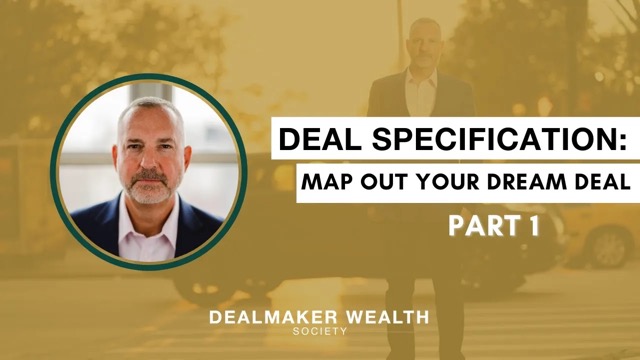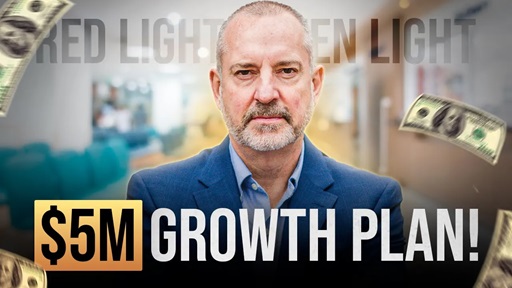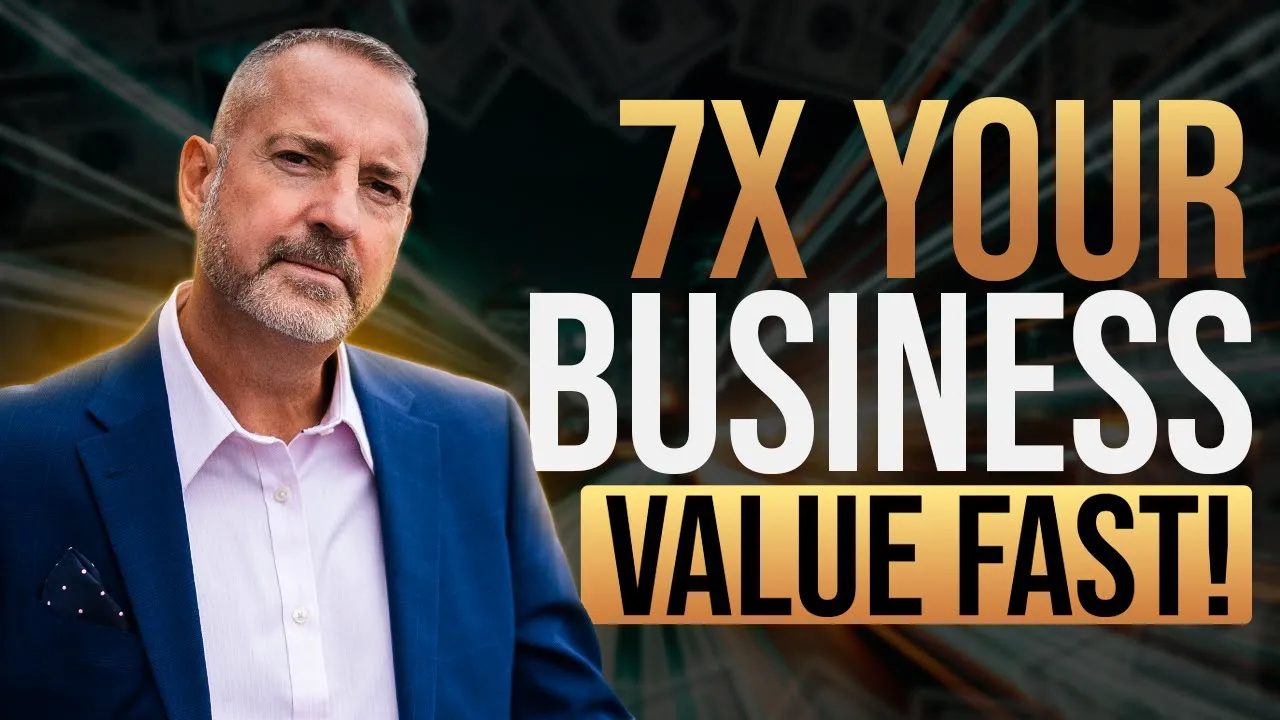Deal Specification: How To Create A Wealth Creation Plan
Deal Specification: How To Create A Wealth Creation Plan
In this video, Carl Allen walks you through how to create your Wealth Creation Plan—a core pillar in buying a business the smart way. Whether you’re a first-time buyer or a seasoned entrepreneur, this module helps you map out your goals with clarity: how much cash you want up front, how much annual income you’ll take, and what your target exit looks like. Carl breaks it all down with simple numbers and shows you how this plan forms the foundation for evaluating deals with intention and confidence.
You’ll also get insights into smart valuation methods, profit multiples, and how to structure tax-efficient withdrawals. And don’t worry—Carl keeps it simple, so you don’t need a finance degree to get it. This lesson ties into the bigger strategy of using bolt-on acquisitions to accelerate wealth creation. If you’re serious about building lasting financial freedom through acquisitions, this plan is where it starts. Stick around for the next video, and don’t forget to check out Carl’s free 90-minute training that walks you through the 3 secrets to buying a profitable business in just 99 days.
Full Transcript:
Welcome to this YouTube channel on how to buy businesses no cash down. I’m Carl Allen, and I’ve been buying businesses for almost twenty five years, more than two hundred and fifty deals in seventeen countries.
This playlist is all about deal specification.
So what type of business do you want to buy? The sector, location, the size of the deal, your desired role in the business, and how you bring your passion, your business skills, and experiences to bear. Here’s the next video in the sequence. There are five in total.
Welcome back. Next, I want to cover your wealth creation plan. Now this module is important for both individuals and existing business owners. However, there is another module following on from this that built on the first wealth creation plan to then include bolt on acquisitions. Now even if this is your first deal, you should still watch the next video as it shows you how you can accelerate your individual wealth creation plan.
So the wealth creation plan starts with the end in mind. It’s an excellent business practice to know what your exit strategy is before you venture into business for a start up or for an acquiring an existing business. The only reason to go into business is to build it, sell it, and then get paid for it. The sale or the exit, as we call it, makes up the bulk of your wealth creation plan in terms of numbers.
Now my advice to you on your first deal is to shoot for something sensible and realistic.
It’s up to you how are you aim. The system works up to twenty million dollars in target business annual sales. However, I always recommend you learn to perfect the process in the early days with smaller deals. Less can go wrong, and you’ll have far less competition targeting smaller businesses.
Therefore, I recommend a maximum five million dollar wealth creation target for your first deal. Now that’s still gonna put you in the zero point two percent bracket we talked about in the original webinar or one million dollars per year provided you hold on to your business for the full five years. And as I mentioned earlier, bolt on acquisitions will rapidly accelerate this, and I cover that in the next video. For now, however, let’s cover off the basics of a wealth creation plan.
So your total number has got three elements to it. First is the exit price, which is the price that you agree to sell your business for after x number of years when when you decide you’re ready. The second part of the number is the money that you’re able to take out of the business on a regular basis, whether it’s, weekly, monthly, quarterly, annually, however you want to do it. And then the third part of your number is the cash that you take out of the deal at completion. So in essence, it’s getting paid for doing the eighteen weeks of work to get your business in the first place. And let’s discuss each one of these separately.
So the exit price is the value of your business in terms of its equity or share value plus the cash in the business at the time you sell it, which is your money, less any long term debt that the business owes, owes, either to the former seller, if you’ve got deferred future payments, and to any financiers that have lent you the money to do the deal. Don’t worry. We get into all this in detail over the next eighteen weeks, and I also cover it at a very high level in the next video.
Now there are many tax efficient ways to take money out of a business that you own. It depends on where the business is registered and your own personal circumstances, but any accountant or tax adviser can advise you accordingly. Monthly income as salary, consultancy fees, benefits, dividends, perks, bonuses, whatever they are. On these types of deals, you can have the business pay the professional fees to the accountant for the advice and structure it on a contingency basis. So the business pays the fees, not you, and only if the deal completes. Again, we get into that in much more detail in the due diligence and legal sections later in the training. However, have your chosen accountant structure the best way for tax purposes to take money out of the business on a regular basis?
And finally, is the cash that you’re able to take out of the deal at completion. So this is essentially the total funds raised in step five of the process less any cash the seller needs on day one, if they do, less any cash required for growth and professional fees in completing the deal. Now you may find that the business has sufficient cash left in it at completion to do all of this stuff, and I’ll guide you through that later on in the process. However, for now, just know the principles involved. Now if the seller doesn’t need any cash at completion and the business has sufficient funds to pay its bills, then you can take as much of the fund raised for yourself.
So let’s look at an example based on the five million number. Now the cash out at completion is difficult to quantify at this stage since you haven’t seen any businesses, and you’ve got no direction the financials, the fundability, and how the deal may be structured. In eighteen weeks, however, you’ll know all of this stuff in micro detail. However, for now, just take five percent of your total number of five million dollars for the day one payment. So in this case, it’s two hundred and fifty thousand dollars.
Next, consider the annual cash that you’ll want to take out of your new business. You may base this on what you’re currently earning in your job or what you need to meet your family overhead and do all the things you want to in your life, or you may want to hire them out. You know, who doesn’t? For this, it’s prudent to use the same number as the day one cash, but replicated for each year that you own the business. Once we start originating opportunities and reviewing the financial numbers, we can fine tune this. But for now, just take five percent as an annual amount.
And last but not least, the largest of the three numbers is the exit payment. This will be the difference between your number, so five million in this case, less the day one amount, less the annual monies over the time you plan to own the business. So in this case, we have a total of one million dollars over the three years plus the completion payment. This leaves four million as an exit payment. Next, let’s look at how this translate into the current size of the business.
Now as we mentioned earlier, we use a multiple of profit to translate the exit price to profitability, Operating profit or EBITD as it’s referred to. That’s earnings or profit before interest, which is the I, tax, which is the t, and d, which is the depreciation. There’s a full set of modules on the financial aspects later. I think they’re in week four.
But for now, I just want you to understand the principles involved. So start with a five times multiple for prudence, and that is on the low side, especially if the business is in the technology, telecom, or pharmaceutical sectors. And remember, some businesses sell for much higher multiples, ten x, fifty x, even a hundred x in some cases. But let’s keep this really simple and conservative.
Just start with five x. So that’s it for this particular video. The next video in this playlist will follow, and please check out all the other playlists and videos for everything you need to know to learn how to buy a business no cash down. In fact, I’ve crammed everything that you need to know into a special ninety minute webinar titled three insider secrets to buy a profitable business inside of ninety nine days without cash or knowing how to run a business.
And here are the three big secrets, the three killer training topics. Think of these as hurdles to you becoming a business owner. First, I’ll show you exactly what the ten steps are to buy a business, and you must follow these in order. It’s really critical.
Second, I’ll show you lots of case studies of deals structured using OPM, other people’s money. And it’s no more difficult than high school math. And finally, I’ll show you how you can get others to operate the businesses for you so you can do other things like spend time with your family or buy other businesses whilst enjoying the cash flow that your new business is generating for you. So to register for this groundbreaking training, just click on the link underneath this video on YouTube or type in this link into your browser. It’s b I t dot l y forward slash buy hyphen my hyphen business, and I’ll see you on air sometime in the next week. Until then, bye for now.




